Techniques, Tactics, and Procedures (TTPs): Alaska Airlines Award Ticket and the
Greetings, Fellow Travelers!
BLUF: While on a Tokyo stop-over on an Alaska Airlines award redemption, I realized
Tokyo has one of the most extensive but altogether confusing metro and train systems
in the world. While you can buy single journey, one-day, or multi-day passes, none
works on all systems. By having a rechargeable, contactless smart card (known as an
“IC card”), you can enter and exit any system and pay without worry. Plus, one card,
SUICA, is available on the iPhone and easily rechargeable with ApplePay. I used the
SUICA IC card on my recent trip to Tokyo with much success.
Today’s TTP is about my Alaska Airlines award ticket through Tokyo and using the
SUICA IC card on my iPhone on Tokyo public transit.
To expand on my most recent post, how did I end up in Tokyo? As I was planning the
return from my Asia Winter 2019 trip, I decided on Japan Airlines First Class with an
award redemption from Alaska Airlines Mileage Plan. Alaska requires 70,000 Mileage
Plan miles to fly from Japan to the U.S. in JAL First Class. That is a very good deal
considering its 11+ hours in a super-comfortable seat with great food.

However, before I get into the redemption, how do I earn Alaska miles? I have two
credit cards from Bank of America: the Alaska Airlines Personal and Business cards.
When I applied, they both had sign-up bonuses of 30,000 Alaska miles after initial
spend. When I fly Alaska, I use either of these cards to purchase the ticket as they earn
3x Alaska miles/$1 spent. The best return for Alaska miles in the business.
Next, while Alaska Airlines does not partner with any banks for transferable points (e.g.,
Chase, AMEX, Citi), they are a transfer partner with Marriott Bonvoy. For every 3
Bonvoy points, you earn 1 Alaska miles. However, if you transfer in blocks of 60,000,
you get a bonus. For 60,000 Bonvoy points, you’d earn 25,000 Alaska miles.
Yes, fellow travelers, the points and miles game has math!
Nonetheless, my strict adherence to the maximize-every-dollar rule has brought me
more than enough Alaska miles for the JAL redemption through a myriad of avenues:
credit cards, Bonvoy, and flying Alaska and its partners. Personally, I focus on Alaska’s
program because of their amazing sweet spot redemptions for international First Class.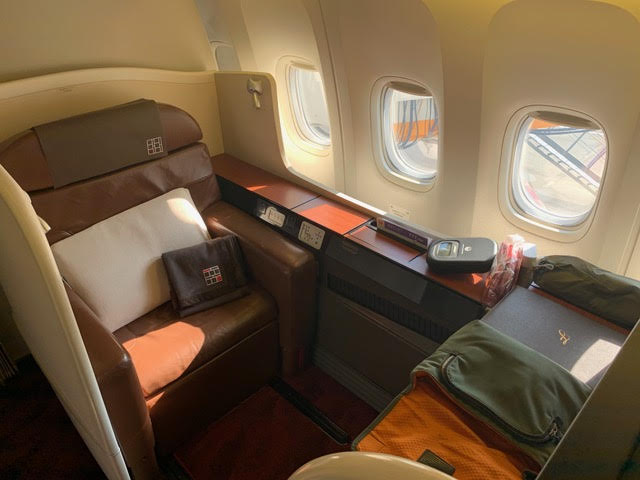
Anyway, back to Tokyo and JAL. Since I started my redemption in Taiwan, the total
cost was 75,000 Mileage Plan miles. Plus, I wanted to take advantage of Alaska’s
generous stop-over policy allowed on one-way award tickets. For no additional miles, I
could schedule a stop-over in Tokyo on my way to the U.S to catch up with a Navy
buddy of mine.
JAL award tickets are searchable on the Alaska website, so with patience and quick
fingers, you can find what you need. I wanted at least two days in Tokyo, so I first
searched for JAL First Class availability from Tokyo (both NRT and HND) to JFK, BOS,
or ORD. It’s always best to start the search with the long-haul flight since you want that
one in a premium cabin. Plus, flying not to the West Coast put me closer to DC, my
ultimate destination. Luckily on 31 Dec, NRT-ORD was available in JAL First Class.
Taipei has two airports, TPE and TSA. On the website, I started with 29 Dec, and I
found JAL Business from TPE to NRT. Sadly, JAL doesn’t fly First Class to Taiwan.
One of the quirks of having a myriad of airline partners, Alaska has individual award
charts rather than a single one. For Southeast Asia (Taiwan, Thailand, Singapore, and
China) to the U.S redemptions are 75,000 Alaska miles in First Class. As mentioned,
even though JAL doesn’t fly First Class to Taiwan, you pay the highest miles based on
the highest class of service. Still, Business Class was perfectly awesome for this three-
hour flight.
With the flights selected on the Alaska website, the perfect stop-over, and a few clicks, I
had my award ticket: TPE-NRT (in Business)/two-night stop-over/NRT-ORD (in First).
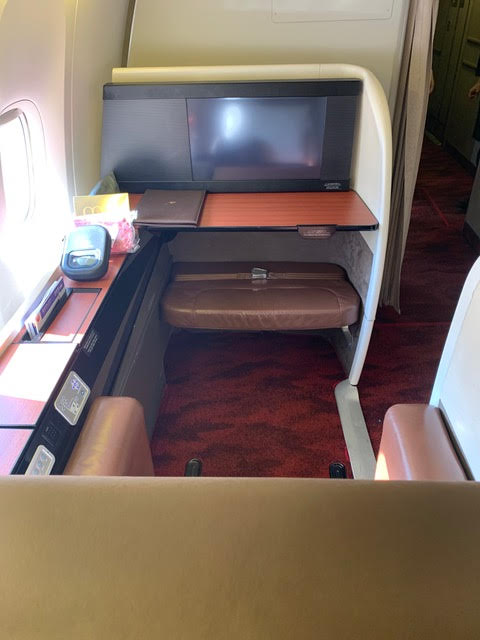
As this would be my third trip to Tokyo, I already knew about the Tokyo metro and train
system. Previously, I’ve just purchased day passes, one-way tickets, or used cash. Not
a bad method, but there had to be a better way. Prior to this trip, I watched some very
helpful YouTube videos on purchasing IC cards for the Tokyo transit system.
However, once I got to my hotel, near Tokyo Station, I looked at my iPhone, and the
SUICA IC card had popped up automatically in my iPhone Wallet app. Since I had
notifications turned on—and had free roaming data at 2G speeds with T-Mobile’s
international travel plan—I didn’t really have to do anything to see the SUICA.
I read up on how it works on the iPhone, and by using ApplePay, you can easily charge
and recharge the SUICA all within the iPhone Wallet app. You need to load an
ApplePay eligible card in your Wallet and use it to load Yen in increments of 1000,
2000, or 5000. I loaded up my new AMEX Green card—it gets 3x Membership Reward
points for transportation and transit—and loaded 1000 Yen on the SUICA.
Further online explanation explained the Wallet app’s “Express Transit” setting. This
means the card can be used and read with the iPhone locked and even if it’s out of
power (although I wouldn’t personally test that feature). Instructions said to hold the
iPhone close to the IC reader at the gate of a transit system entrance (metro, train, etc.),
and you will here a BEEP to indicate the card is in use. You do not have to unlock your
iPhone.
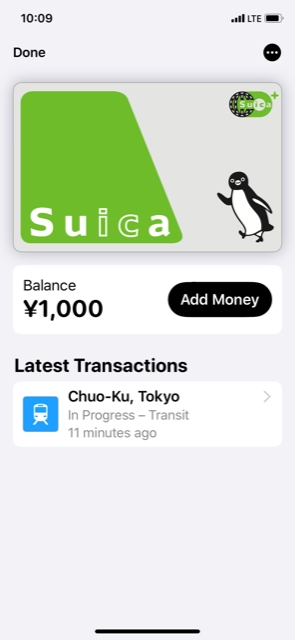
When I was ready to go to the Mori Art Museum—a very cool place near Roppongi
Station—I headed to the metro and followed the instructions. When I brought my locked
iPhone up to the IC reader, I heard the BEEP. When I looked at the card it said “transit
in process.” I was on my way. At the end of my journey, I “tapped out,” and the
appropriate amount of Yen was deducted from my SUICA IC card. The card updated
with the remaining balance. No muss; no fuss!
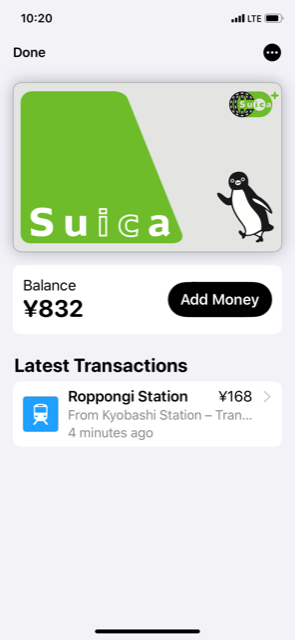
SUICA IC cards can also be used at some stores and shops. You essentially use it the
same way as long as the clerk knows you’ll be using a SUICA for the purchase. It’s
analogous to using ApplePay, ChasePay, and its equivalents in the U.S. I was
surprised at how easy the whole process was with the SUICA card. Not having to worry
about cash or coins for the many transit systems in Tokyo was awesome.
I am not sure, though, if Android has an equivalent app or if the other main Tokyo IC
card, PASMO, is available via an app. While SUICA and PASMO work exactly the
same way—they’re different companies—only SUICA appeared on my iPhone.
In sum, international travel comes with so many levels of adventure: First Class on the
world’s top airlines to riding metros like a pro. Alaska Airlines helped me explore one of
my favorite cities, Tokyo, and the SUICA IC card, easily usable on the iPhone, made
exploring the city so much easier.
Happy Travels!
Vr,
Albert
Albert Guerrero, USAF, Ret.
“Let’s Travel Farther, Together!”
Follow my travels on Instagram: @albert_traveler
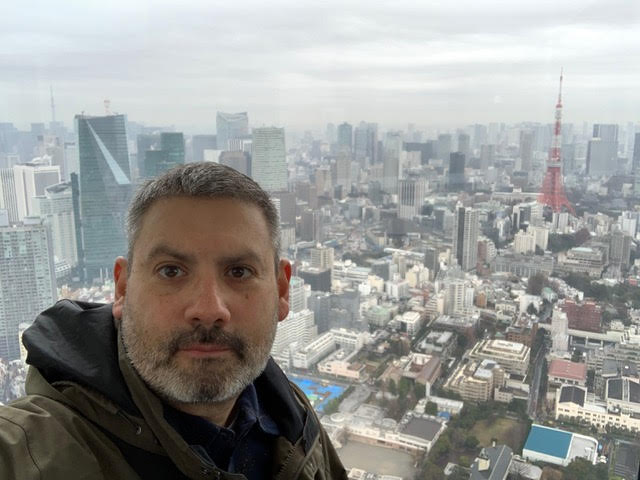

Thank you so much for sharing the info about the Suica Card. Extremely helpful. I just added it to my iphone and paid with my AMEX Green too. Keep up the good work. I’ll be going to Tokyo twice, so this is very helpful info.
In sum, international travel comes with so many levels of adventure: First Class on the
world’s top airlines to riding metros like a pro. Alaska Airlines helped me explore one of
Great report on the Suica. Something to note, you can add the exact amount you need on the Suica app when you select add money. It’s really helpful when you want to make sure you don’t leave anything left on the card.